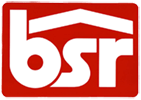The weak points of a conventional roofing system is its joints and penetrations. The former refers to the location where slopes and roofing panels meet while the latter refers to anything that is installed by drilling a hole in your roof. To prevent rainwater from infiltrating your underlayment, residential roofing contractors install flashing, thin strips of metal that cover gaps between roof penetrations and the roofing membrane.

The Problem With Flashing
Since flashings cover the weak points of a roofing system, they are, by extension, a vulnerable point. It’s not uncommon for roof flashing to be dislodged by high winds or impact over time. Fortunately, by choosing the right kind of flashing and having your roof maintained routinely, you can reduce the risk of leaks.
The Different Types of Flashing Materials
Here’s an overview of common flashing materials:
- Sheet metal – Sheet metal is manufactured using steel, zinc and aluminum alloys, and is the most commonly used material.
- Aluminum – Aluminum flashing is a popular option on the market, thanks to its durability and cost-effectiveness. However, it’s not suitable for all homes. For instance, contractors don’t recommend installing aluminum flashing on homes with concrete and fiber-cement siding – the alkaline components in cement and fiber cement siding can corrode aluminum. You also need to be careful with copper-rich preservatives commonly used in certain kinds of lumber as these can degrade aluminum as well.
- Lead – Lead flashing is used to cover gaps between chimneys and the roof surface.
- Copper and lead-copper – This is the most expensive, but also the most durable option. Copper and lead-copper flashing isn’t affected by wood preservatives and is often found in historic homes. However, it is harder to mold than the other three. That’s why only an experienced contractor from an exterior services company should handle them.
Looking for experienced contractors in your area?
BSR has been providing professional exterior services, including roof repair services, to local residents since 1913. To get a free estimate, call us at (607) 722-7221, or fill out this form. We serve homeowners in Ithaca, NY, as well as the surrounding communities.



 We are a 5 generation family business founded in 1913
We are a 5 generation family business founded in 1913








